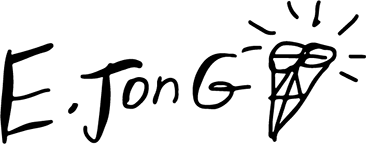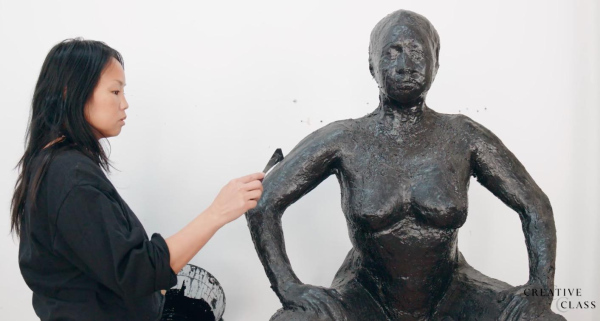INTRODUCTION
Ellen Jong situates the body—and specifically the Asian-American female body—as an active site of authorship within a long history of image-making. She began in photography, not as diaristic confession but as method. Pees on Earth (powerHouse/Miss Rosen, 2006) is eight years of self-portraits taken during acts of urination in public and private space. The work confronts visibility, decorum, and control, claiming ground through a literal stain. Its reception placed Jong within a feminist lineage that includes performance and body art while locating her in the documentary and street traditions that shaped downtown New York at the turn of the millennium. In 2010 she extended this project of radical intimacy with Getting to Know My Husband’s Cock—a small book that circulated decisively in artist-led publishing and was later recognized in institutional contexts. From the outset, Jong used her own image to test how subjecthood is constructed, named, and policed.
Around 2014–15 the vector of the work turned from representation to material. Returning to the ink rituals of her childhood home in Queens—where her father ground ink sticks for painting—Jong re-engineered ink from first principles. Over seven years she formulated a sculptable, organic ink derived from soot and gelatin, adapting a medium associated with permanence and tradition into one that breathes, dehydrates, rehydrates, and changes with time and environment. This is not a metaphorical shift; it is a technical one. The result is a sculptural language in which ink is no longer a vehicle for depiction but the surface and the subject at once.
The Ink Body Sculptures are the clearest articulation of this turn. Life-casts of the artist—some functioning as fountains that circulate liquid ink through dehydrated ink bodies—extend mark-making into three dimensions and into duration. The works accept vulnerability: edges soften, surfaces stain, and maintenance becomes part of meaning. They reject the rhetoric of monumentality and align instead with post-minimal and post-conceptual practices where process, contingency, and site are constitutive. They also argue for agency: the body does not merely appear; it acts, leaks, and authors.
Parallel series widen the register. Ink Panties (including the Art Crush subset) use intimacy and humor to expose how desire, fandom, and shame get mapped onto the feminine. The Velvet Tondos—pigment built up on stretched velvet—press “painting” into material experiment while keeping the chromatic economy of ink. Works on Paper such as Ink Vessels pour layered ink into silhouettes of ancient Chinese vessels, then pierce them with body hardware. The gesture is straightforward: if the category is “object,” it will not be passive. Across these bodies of work, heritage is neither ornament nor brand; it is a working problem addressed through craft, chemistry, and form.
Read against art history, Jong’s practice triangulates three coordinates: feminist self-representation, post-1960s material inquiry, and diasporic reclamation of mediums long filtered through Western institutional frames. She speaks fluently to ongoing debates about who gets to produce the canon and with what materials. The photographs established an ethics of looking; the sculptures convert that ethic into a material system with its own rules and consequences.
Jong offers a coherent, expandable language—photographic, sculptural, and installational—anchored by a rigorous reinvention of ink. The work is formally exacting, historically literate, and publicly legible. It is built to hold a room and to sustain a program.

